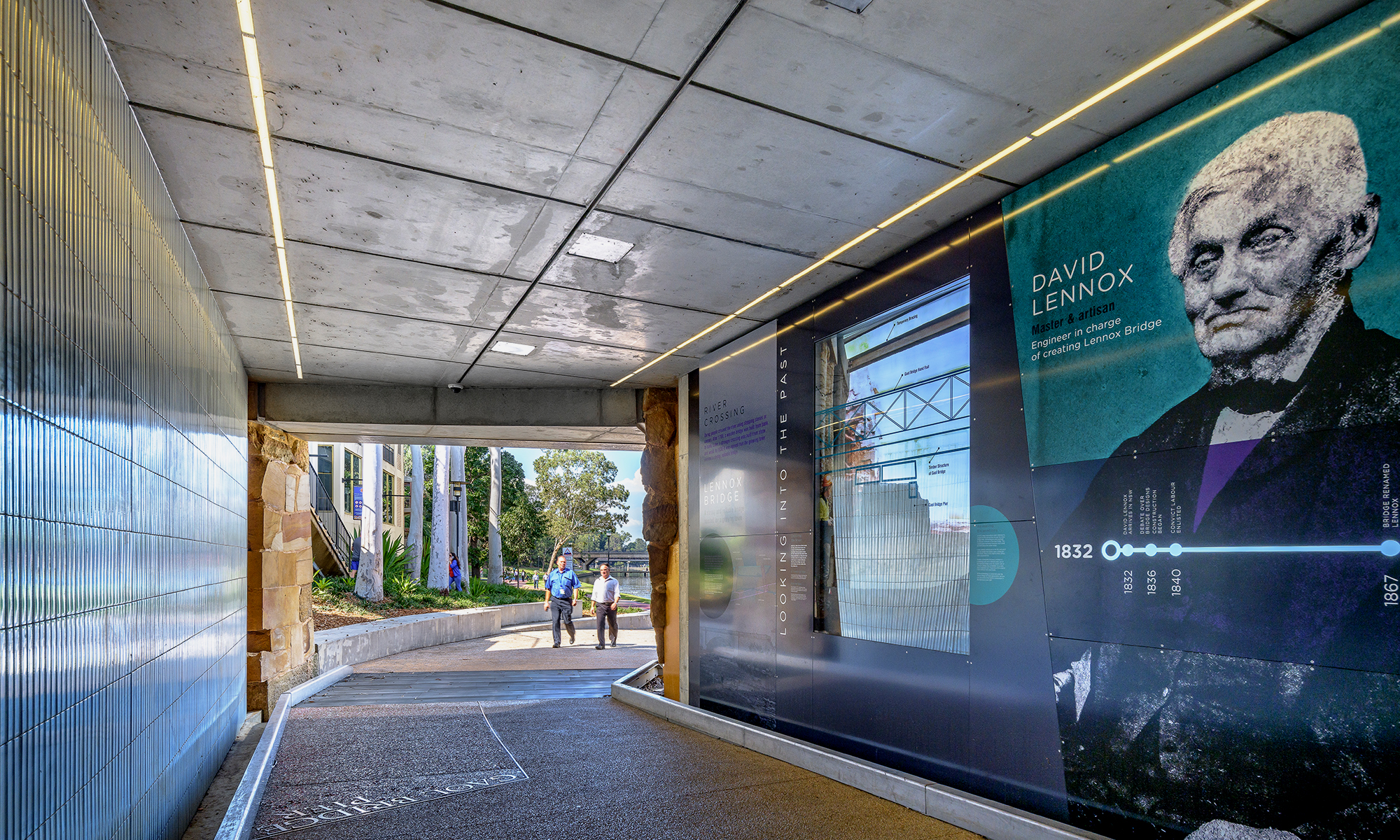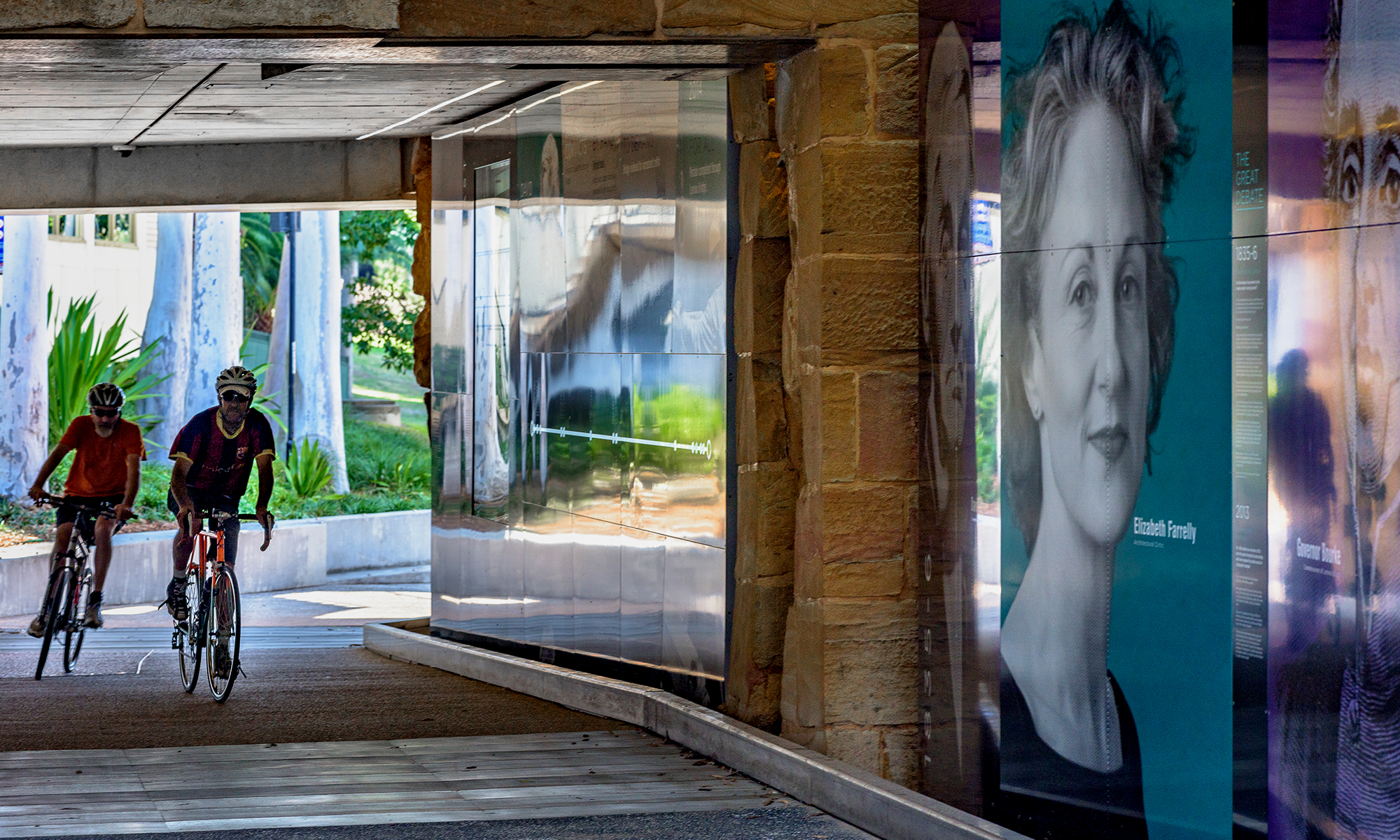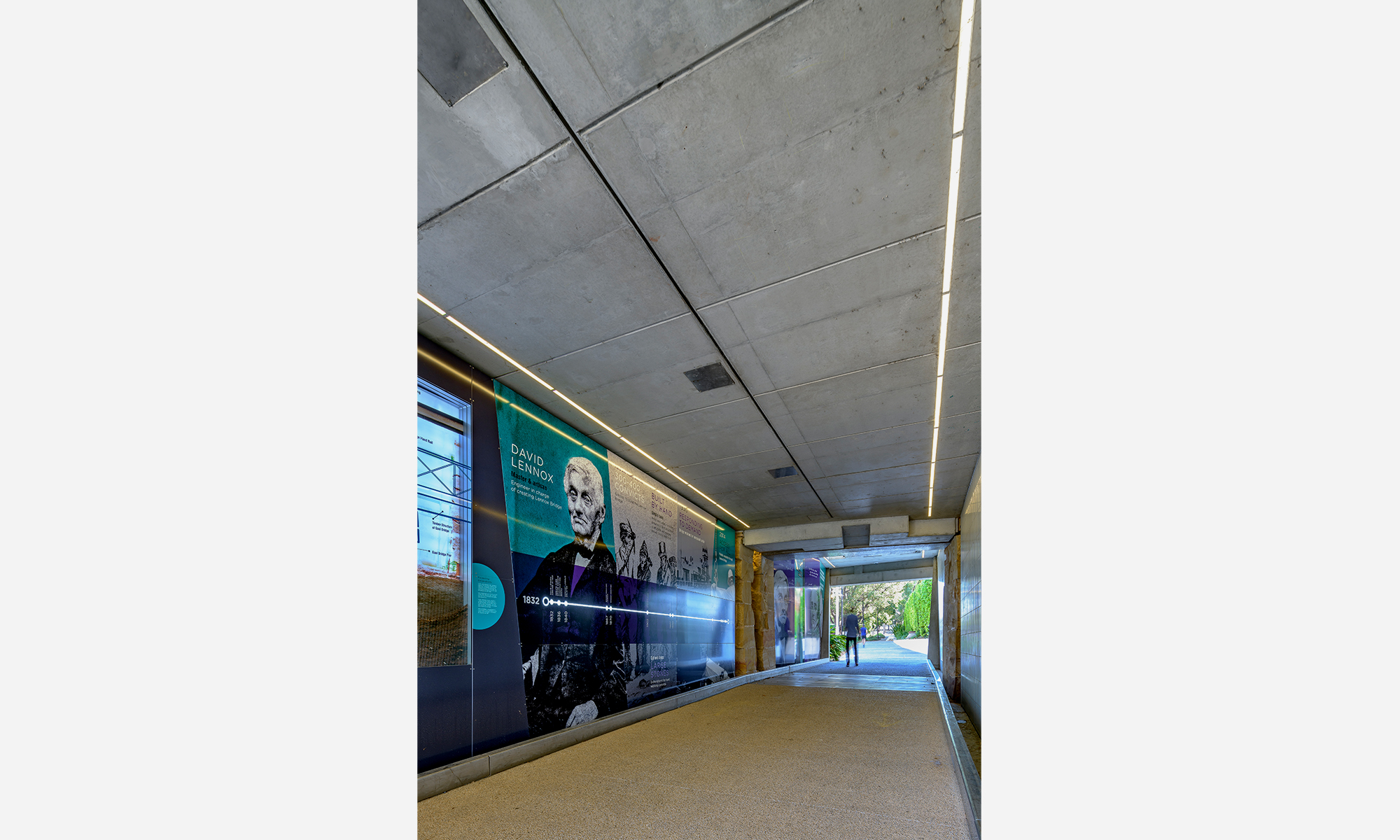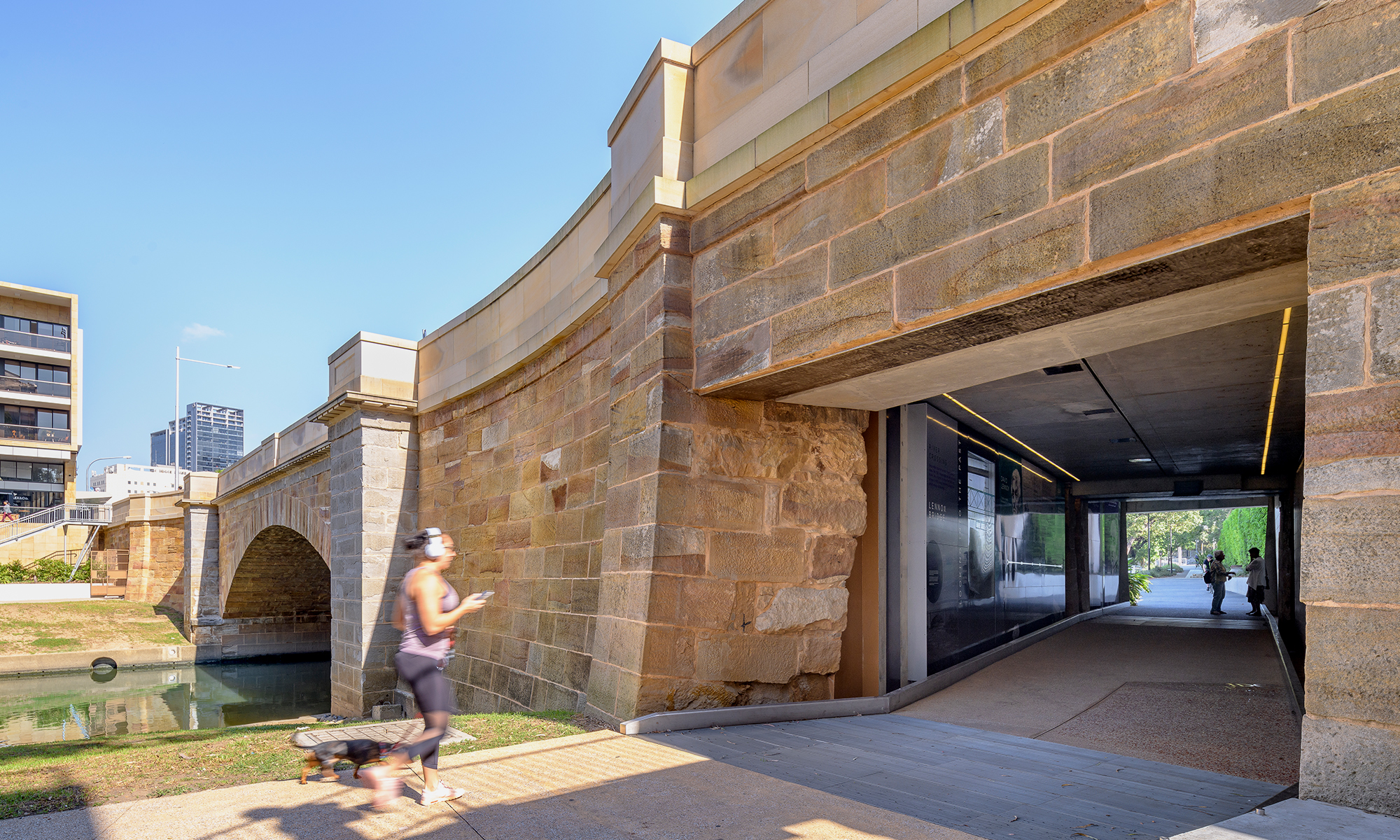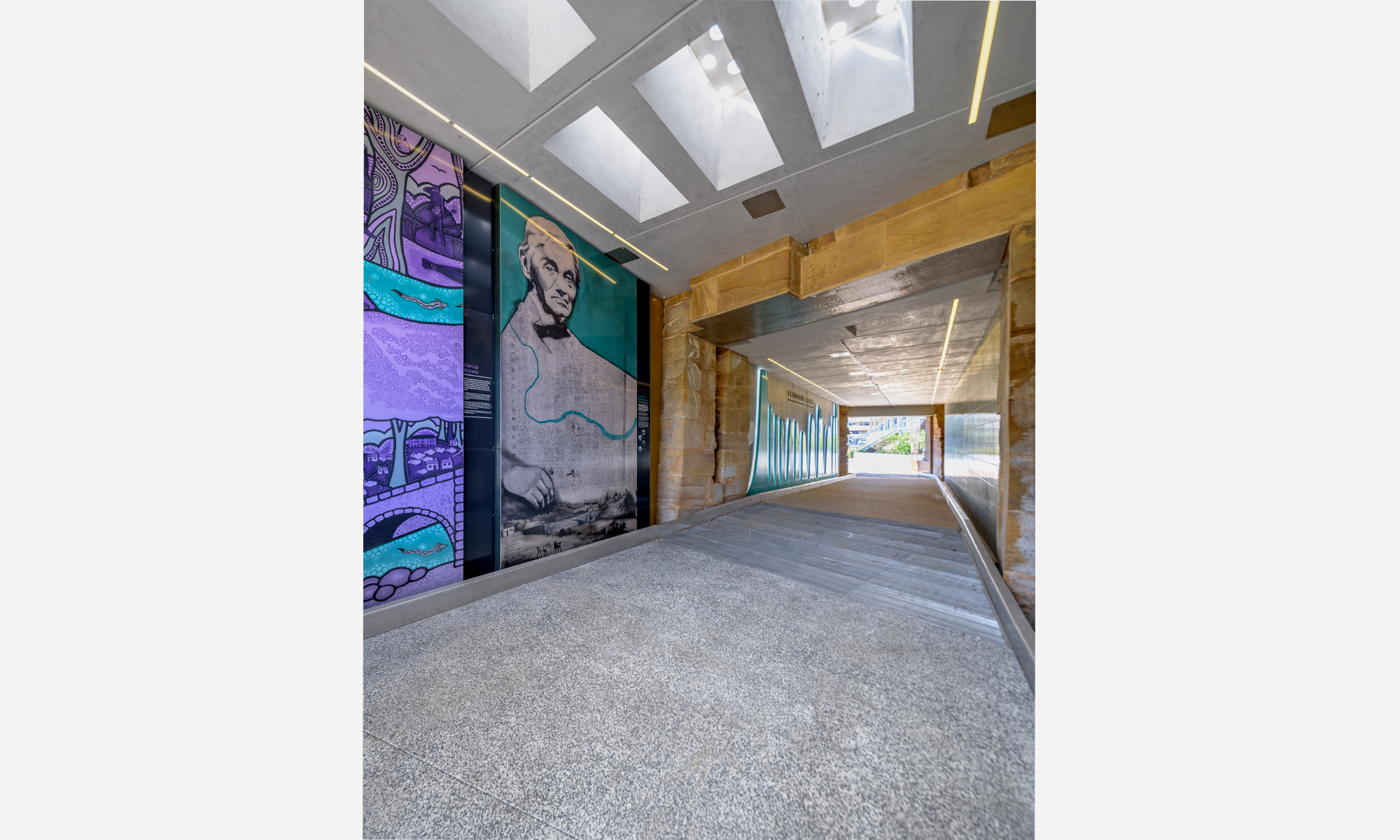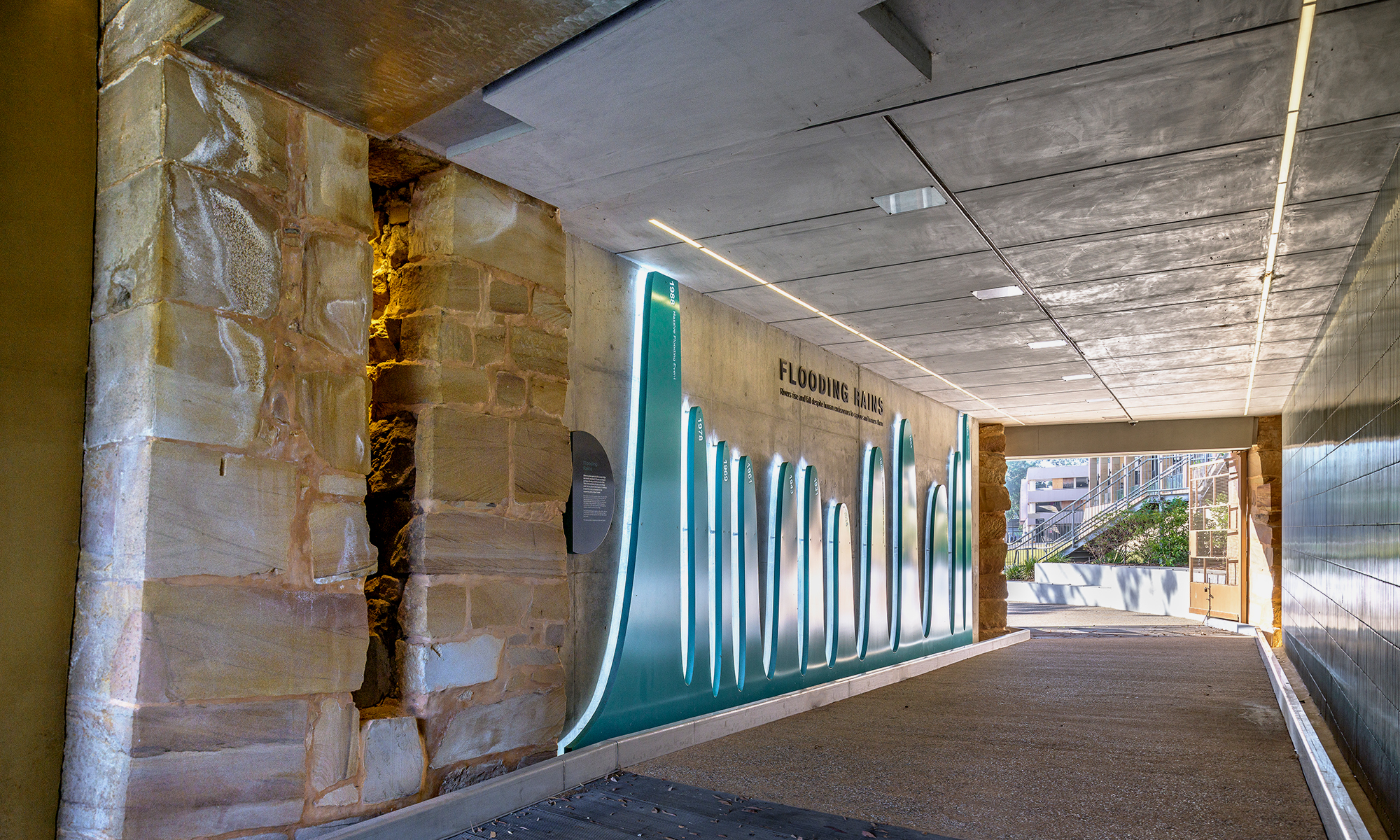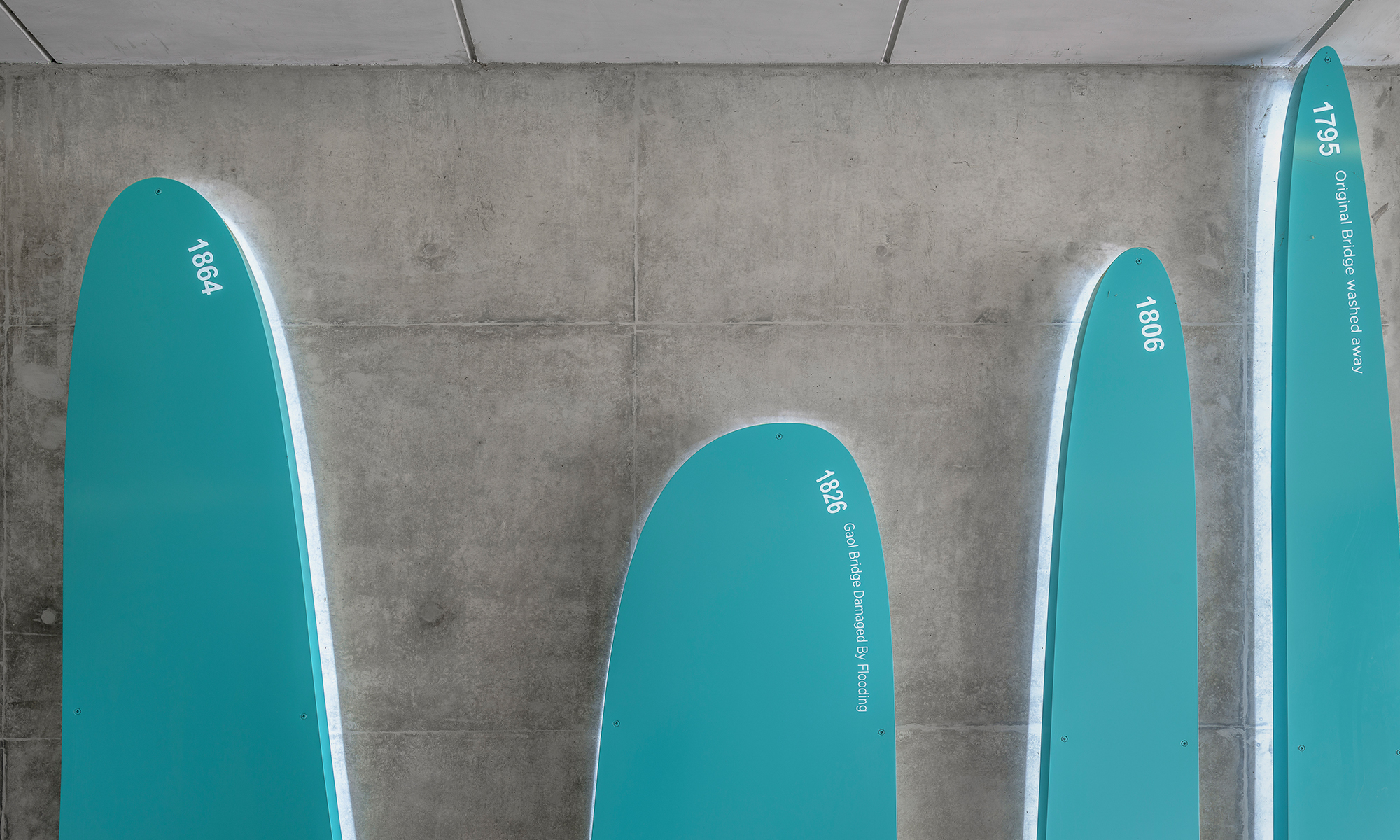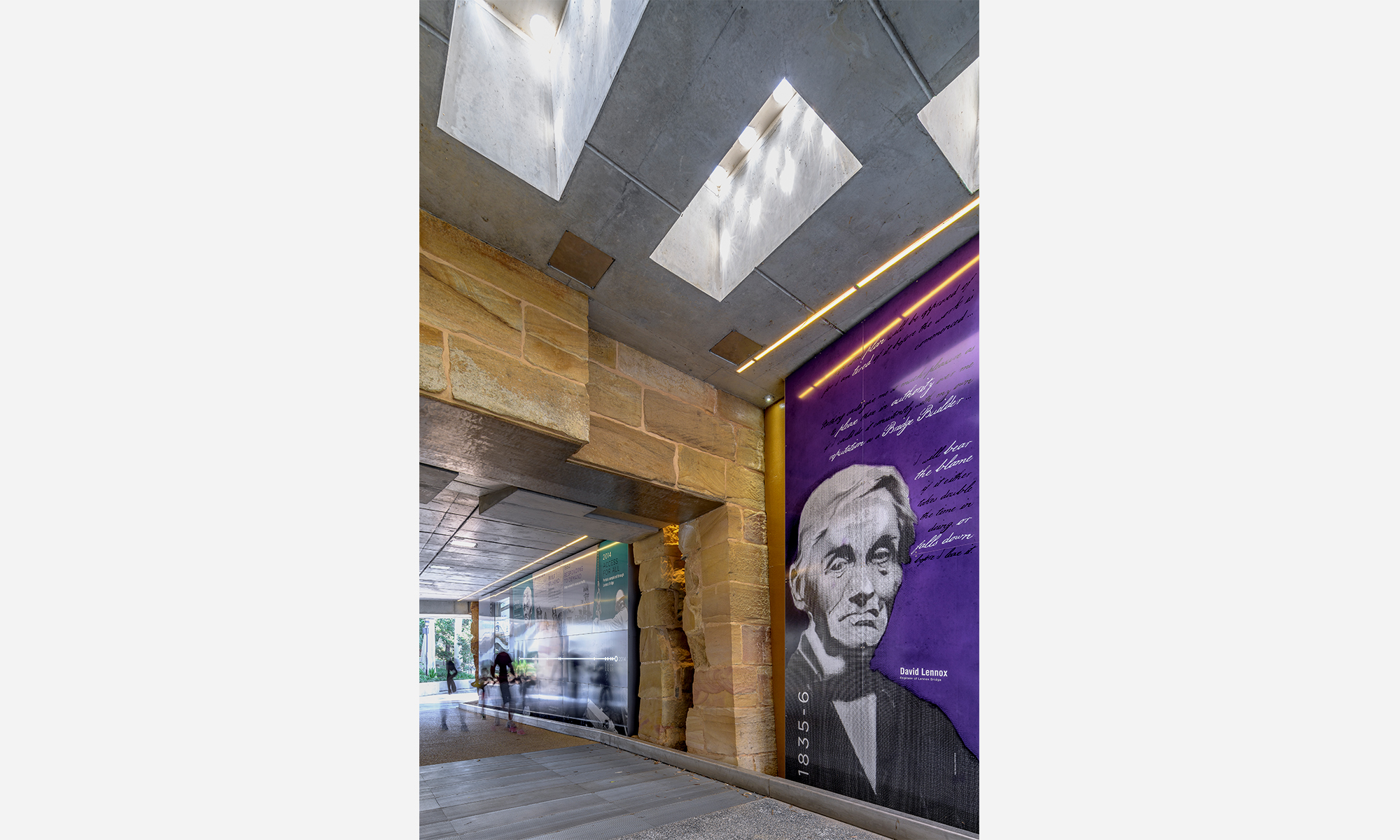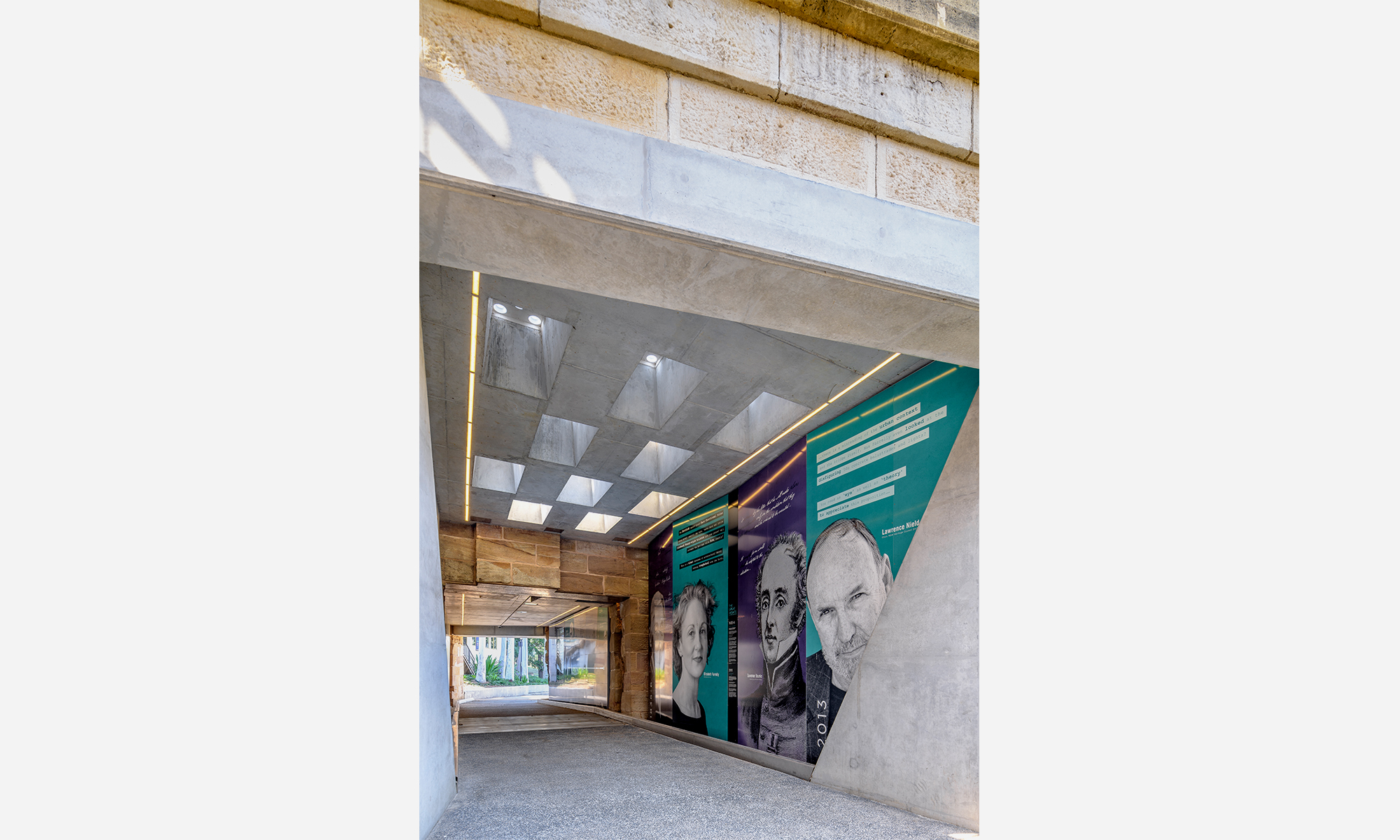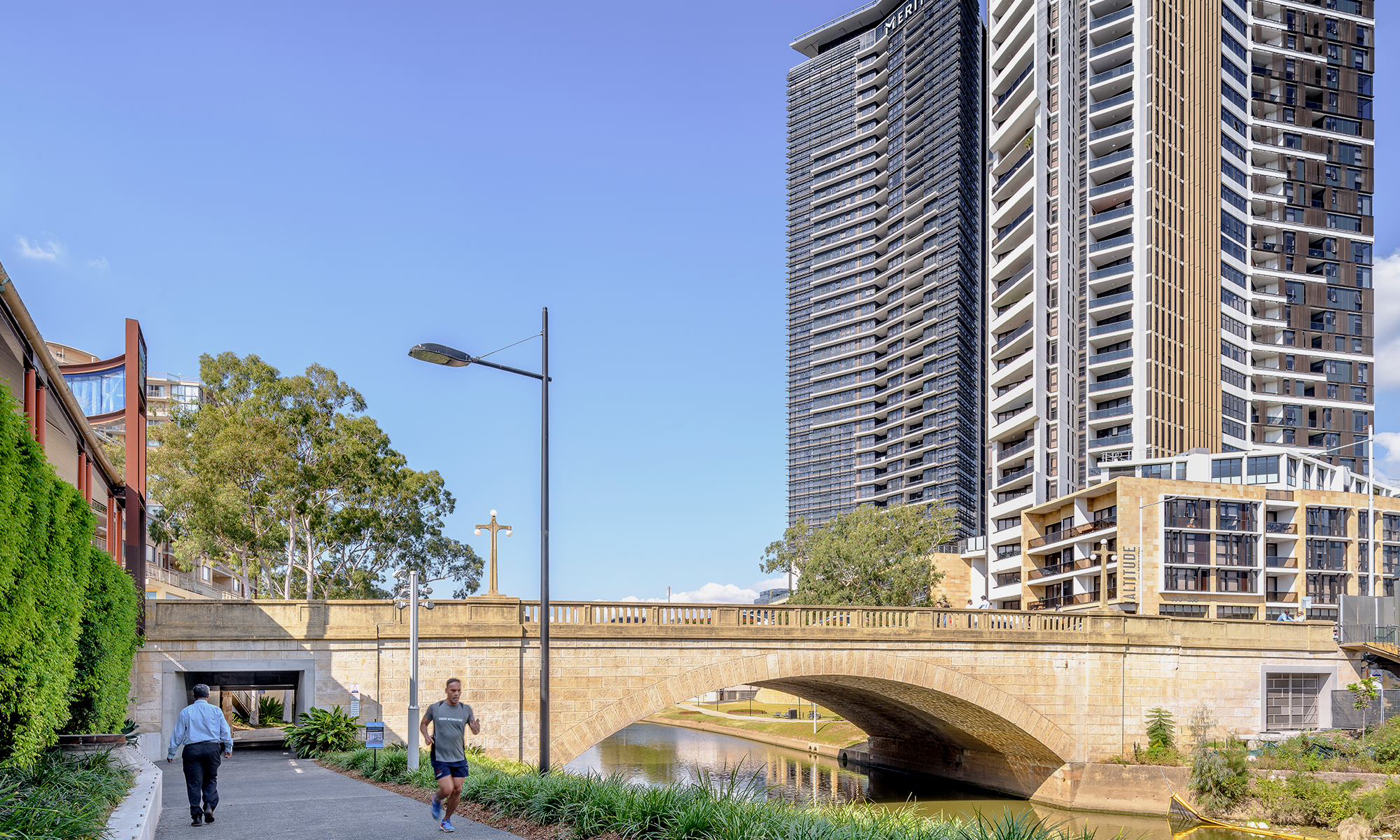Lennox Bridge Portals, Parramatta, NSW
Opened May 2018
Project Commenced: October 2016
Project Completed: April 2018
Thylacine’s role
- interpretive design
- graphic design
A Permanent Installation
Parramatta City Council’s decision in 2010 to extend the foreshore pathways as portals through Lennox Bridge at Parramatta prompted controversy – echoing the situation at the bridge’s conception in 1835, when the new bridge’s geometry, height and character were fiercely contested.
Working closely with Council and heritage stakeholders; Thylacine’s role was to provide interpretive elements with the ability to communicate the story of the bridge over time, celebrate the archaeological finds, delivering an interpretative treatment to engage audiences; sympathetic to the history of the bridge and the recent contemporary architectural additions of the bridge portals that is easily and quickly absorbed and understood by the audiences as they pass through the portals.
Thylacine’s approach to the task was to interpret each portal as two distinct gallery zones. The eastern approach being a compressed and lineal gallery carved through the 1830s bridge with a defined interconnection delineated by exposed structure before the western, taller, shorter and brighter DMR 1930s gallery.
Both north and south portals have distinctive character and rhythm, hence Thylacine chose to give a strong consideration to the design approach to each. With the opportunity to instill contemporary character to the significant and highly valued heritage, our design is targeted towards interpretive story telling that is both accessible and engaging to all.
Each portal celebrates the centennial evolution of bridge construction through an interpretive delivery of imagery, texture, and light, with a deliberate reference to Parramatta today. Each portal tells the story of the ‘bridge’ through illuminated graphics, with the intrigue of history through visual stories and text.

